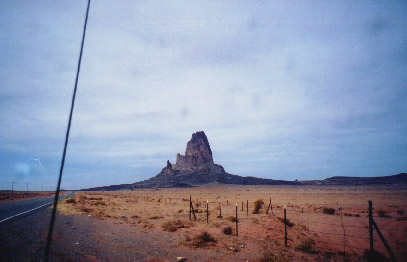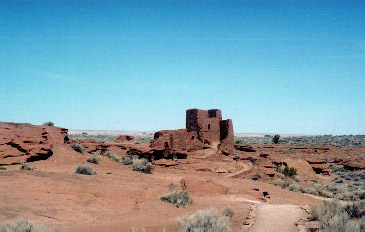 The San Juan River (the locals just call it the "Juan") flows out of the Four Corners area of UT, CO, AZ and NM and flows roughly west until it enters Lake Powell, the lake formed by the Glen Canyon dam holding back the San Juan and Colorado rivers. It is commonly floated in inflated rafts from Sand Island near Bluff to Mexican Hat (27 miles) or to Clay Hills (57 miles).
The San Juan River (the locals just call it the "Juan") flows out of the Four Corners area of UT, CO, AZ and NM and flows roughly west until it enters Lake Powell, the lake formed by the Glen Canyon dam holding back the San Juan and Colorado rivers. It is commonly floated in inflated rafts from Sand Island near Bluff to Mexican Hat (27 miles) or to Clay Hills (57 miles).
We were interested in exploring ancient ruins and viewing rock art. These occur only in the first eight miles of the river below Sand Island. So we put in further upstream near the town of Montezuma Creek. This added a few more miles to the trip and gave us a few more opportunities to look for ruins. Upstream of Montezuma Creek is an oil drilling area with all its attendant problems. After the ruins end around mile 8, the river cuts its way into ever deeper canyons. These are interesting but only a geologist can get really excited about the view.
 We were a group of three: Norm's son Colin, a high school senior, came along. Norm and Colin were veterans of several hikes in this area. They had made several trips here and to the Grand Canyon. Norm is very knowledgeable about the archeology of the ruins and rock art. They were particularly adept at climbing one side of a canyon to look for ruins on the other side. They could quickly descend and find a way up to the ruin. I pursued a more leisurely pace.
We were a group of three: Norm's son Colin, a high school senior, came along. Norm and Colin were veterans of several hikes in this area. They had made several trips here and to the Grand Canyon. Norm is very knowledgeable about the archeology of the ruins and rock art. They were particularly adept at climbing one side of a canyon to look for ruins on the other side. They could quickly descend and find a way up to the ruin. I pursued a more leisurely pace.
 If one theme of this trip was dryness, another was darkness. We had several adventures after the sun went down. It began with Norm and Colin arriving in Phoenix at 10:00 pm. By the time we had ascended the 5,000 feet to Flagstaff it was 1:00 a.m. and 20 degrees cooler. The sight of a big elk near Flagstaff was a special ending to a long day. I had come out a day earlier and had driven the 2.5 hours north to Flagstaff ("Flag" to the locals) to pick up the raft we had rented from Canyon R.E.O. In loading the raft, large cooler, required toilet and fire pan and water jugs on the mini-SUV Avis had given me (instead of the full size one I had ordered), it became obvious that the addition of two more bodies and gear was impossible.
If one theme of this trip was dryness, another was darkness. We had several adventures after the sun went down. It began with Norm and Colin arriving in Phoenix at 10:00 pm. By the time we had ascended the 5,000 feet to Flagstaff it was 1:00 a.m. and 20 degrees cooler. The sight of a big elk near Flagstaff was a special ending to a long day. I had come out a day earlier and had driven the 2.5 hours north to Flagstaff ("Flag" to the locals) to pick up the raft we had rented from Canyon R.E.O. In loading the raft, large cooler, required toilet and fire pan and water jugs on the mini-SUV Avis had given me (instead of the full size one I had ordered), it became obvious that the addition of two more bodies and gear was impossible.
 A third theme of this trip was forgetfulness. I'll recount all the essential gear that we all forgot later but at this point in the trip I'll simply say that I forgot certain details of the rental car arrangement. In brief we were stuck with the mini-SUV. Phoenix had no regular SUV's or minivans. I was able to find a minivan in Flagstaff and by paying extra money was able to rent it. This meant that the cheap rate I had obtained through priceline.com was gone and that, since the mistake was mine alone, the higher rate was mine alone; it could not be divided among the others.
A third theme of this trip was forgetfulness. I'll recount all the essential gear that we all forgot later but at this point in the trip I'll simply say that I forgot certain details of the rental car arrangement. In brief we were stuck with the mini-SUV. Phoenix had no regular SUV's or minivans. I was able to find a minivan in Flagstaff and by paying extra money was able to rent it. This meant that the cheap rate I had obtained through priceline.com was gone and that, since the mistake was mine alone, the higher rate was mine alone; it could not be divided among the others.


